
No money-out option for govt
No money-out option for govt
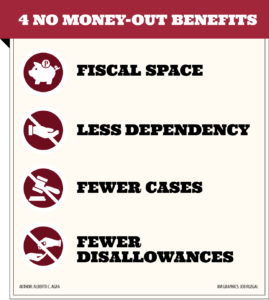 ARE implementing agencies (IAs) required to shell out money for public private partnership (PPP) arrangements? What is the appropriate PPP modality for a no cash-out option on the part of the government? Why is this option popular for IAs, particularly local government units (LGUs)? Aside from cash, what can an IA contribute so that it will have a “skin” in the project?
ARE implementing agencies (IAs) required to shell out money for public private partnership (PPP) arrangements? What is the appropriate PPP modality for a no cash-out option on the part of the government? Why is this option popular for IAs, particularly local government units (LGUs)? Aside from cash, what can an IA contribute so that it will have a “skin” in the project?
The government has the option to or not to contribute cash; extend subsidy; provide viability gap funding; guarantee, or give equity to a PPP arrangement. Depending on the modality, priority, governing law or viability of the project, the choice partakes of a legal, political, socioeconomic, even a leadership question and challenge.
Under the build-operate-transfer law, the government may provide for a direct government guarantee, subsidy or equity for solicited projects. Depending on the modality, lease payments and grantor payments from the government may be part of its contractual obligations. For the School Infrastructure Project and South Integrated Transport System Project, the government will make such payments to the private-sector proponents (PSPs). The annual budget to be approved by Congress must provide for an appropriation for these payments.

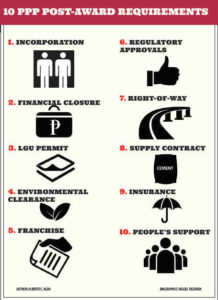
 CAN
CAN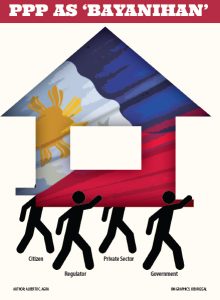 relevant to public-private partnerships (PPPs)? Are the objectives of bayanihan and PPPs the same? For PPPs to succeed, what in the spirit and practice of bayanihan can be used? What can we learn from examples of bayanihan? Who is the bayan (country) and bayani (hero) in PPPs?
relevant to public-private partnerships (PPPs)? Are the objectives of bayanihan and PPPs the same? For PPPs to succeed, what in the spirit and practice of bayanihan can be used? What can we learn from examples of bayanihan? Who is the bayan (country) and bayani (hero) in PPPs?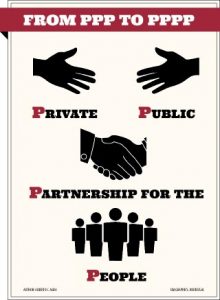 IS public-private partnership (PPP) the only solution to the infrastructure deficit? Is PPP truly a priority program of the incoming Duterte administration? What is its relevance and importance in achieving the 10-point socioeconomic agenda? Is there a future for the PPPCenter? What could be the role of the PPP Center moving forward?
IS public-private partnership (PPP) the only solution to the infrastructure deficit? Is PPP truly a priority program of the incoming Duterte administration? What is its relevance and importance in achieving the 10-point socioeconomic agenda? Is there a future for the PPPCenter? What could be the role of the PPP Center moving forward?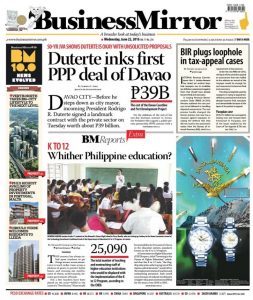 Davao City—Before he steps down as city mayor, incoming President Rodrigo R. Duterte signed a landmark contract with the private sector on Tuesday worth about P39 billion.
Davao City—Before he steps down as city mayor, incoming President Rodrigo R. Duterte signed a landmark contract with the private sector on Tuesday worth about P39 billion.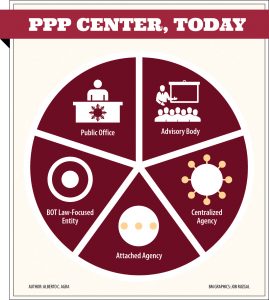 WHAT
WHAT